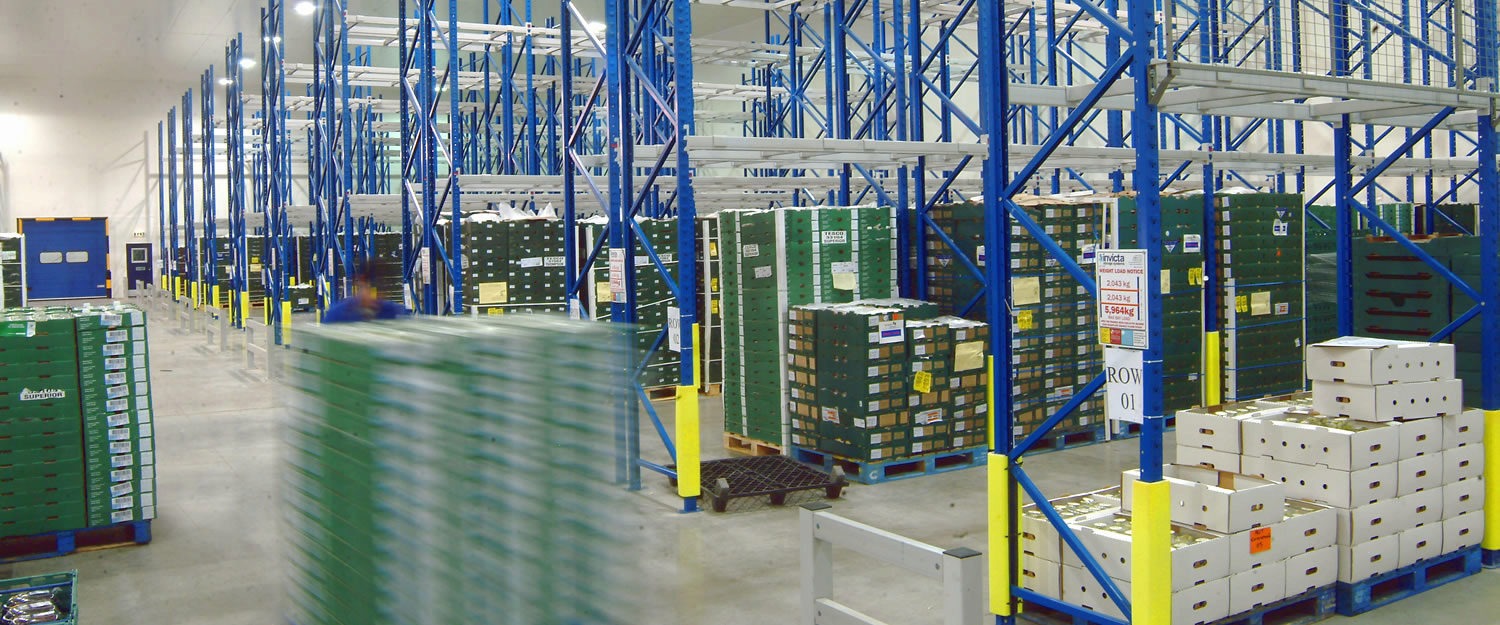For your information
You are being redirected to one of our divisional subsites which contains more detailed information on the required division. To navigate back to the main Invicta Group site, please click the link found in the footer at the bottom of the page.
Pallet magazines: everything you need to know
30th June 2022
Read all about it
Quick Quote
Contact Mick Coyne
To get a quotation or arrange a free site survey - Call Mick Coyne on
-
 UK
UK
Current location:
Quick Quote
Contact Mick Coyne
-
 UK
UK
Current location:
Pallets are the backbone of any warehouse. Varying in size, material and loads, pallets are as crucial to storage as the racking they sit in, ensuring goods are stored safely and in an organised manner. With many warehouses using hundreds or even thousands of pallets, though, there is a question of what to do with them when they aren’t in use – and how to make pallet storage and retrieval more efficient.
Pallet magazines are a common solution, allowing pallets to be stacked and retrieved in a simple and convenient manner. Read on to learn more about how pallet magazines work, how to integrate them into your warehouse, and the new pallet magazine safety standards that look to be coming into effect late in 2022.
What are pallet magazines?
Pallet magazines are a way to store unused pallets until they need to be filled. Magazine refers to the other use of the word, more commonly associated with weapons. In this case, the magazine doesn’t contain cartridges, but a number of pallets, each contained in its own layer.
Stacked on top of one another, a mechanical interface releases one pallet at a time from the bottom of the stack, and moves another into position. The pallets are fed from the bottom until none are remaining, at which point more can be loaded and fed up into the magazine.
Pallet magazines are a simple, safe and intuitive way of storing pallets for immediate access and use. Stacked traditionally, a tower of pallets would likely be unstable, and difficult to retrieve from, as the pallets would need to be taken from the top. A pallet magazine arranges pallets in such a way that they can be easily retrieved from the bottom of the stack, with the ones above secured from falling.
The great benefit of pallet magazines is that they can be placed in convenient positions next to or within racking systems. Their tower design means they typically only occupy the floor space of a single pallet, plus some additional space for supporting trusses and safeguarding. This allows you to set up pallet stations at key points within the warehouse, ensuring a smooth flow of used pallets being deposited and withdrawn for new stock.
Pallet magazine safety standards
Pallet magazine safety is governed by the BSI EN 415-4 standard. Implemented in 1997, this standard governs the operation of all palletisers and depalletisers, including pallet magazines. This includes their design, operation, cleaning and maintenance, among other details. Of these, the safe operation of the pallet magazines is of the greatest relevance to warehouse operators, and dictates both their usage and deployment.
Traditionally, pallet magazines required some form of guarding to avoid injuries. This might include movable guards to block access, trapped key interlocks, and in more modern systems, electro-sensitive protective equipment (ESPE), which senses when someone has entered the space around the machine and shuts it down. However, none of these methods are foolproof, particularly in the instance where someone accesses the machine to perform maintenance.
The problem with these protections is that they utilise what’s known as a single channel evaluation logic. If a forklift enters the space in front of the magazine, the protection is released, but this doesn’t prevent people from then getting caught in the machine. What the new safety standards propose is a multi logic approach that prevents people from accessing the machine while it’s turned on, while simultaneously allowing access for forklift trucks.
Instead of just having an ESPE directly in front of the ‘danger zone’ – i.e. the moving part of the machine – the new standard adds an induction loop both in front of and within the danger zone, to detect nearby objects. A separate system is also required to monitor a series of signals, ensuring the safe and proper operation of the pallet magazine, and managing the automatic restart function – ensuring that the machine cannot be restarted manually while someone is near or inside it.
Implementing pallet magazines
There are a number of factors to consider when implementing pallet magazines in your warehouse. The first is the number of pallet types you use, and whether a pallet magazine can accommodate the variances in size, material and format. It may not make sense to use a pallet magazine to store and dispense pallets if you require many kinds of pallets to rack different types of goods, as you may need multiple magazines, each of which takes up space and represents a substantial capital investment.
The second is how the implementation of a pallet magazine will affect the flow of traffic in your warehouse. The positioning of pallet magazines needs to make logical sense: personnel need to be able to withdraw a pallet, move on to a production area or other space where it will be filled and secured, move it for storage or shipment, and then return to the magazine in a clean loop. The same may also be true in reverse, with pallets being emptied and then deposited. In both cases, the efficacy of traffic management and planning is key.
This is where a consideration of your warehouse racking design comes in. The pallet magazine should be positioned in a manner that complements the natural flow of traffic through the warehouse, but your racking design may not enable this: there may not be space for the magazine, or the space you do have available may create a chokepoint for traffic, where natural traffic through the warehouse meets traffic for the magazine. In both instances, it may be necessary to reassess the layout of your pallet racking.
Utilising a high density pallet racking system can reduce the footprint of your current racking format by as much as 50%, freeing up the space to implement newer, safer pallet magazines. Reconfiguring or replacing your racking can not only make your storage more efficient, but also allow you to reconfigure your layout to reduce gridlock, and support different types of warehouse vehicles, such as new wide aisle forklifts. To discuss a racking redesign and receive a free consultation, get in touch with Invicta Racking today.
Accreditations & Affiliations







Start your project
Tell us about your project. Please complete this form. One of our sales team will come back to you with more details. If you prefer, you can drop us an email.




Share/Like this page